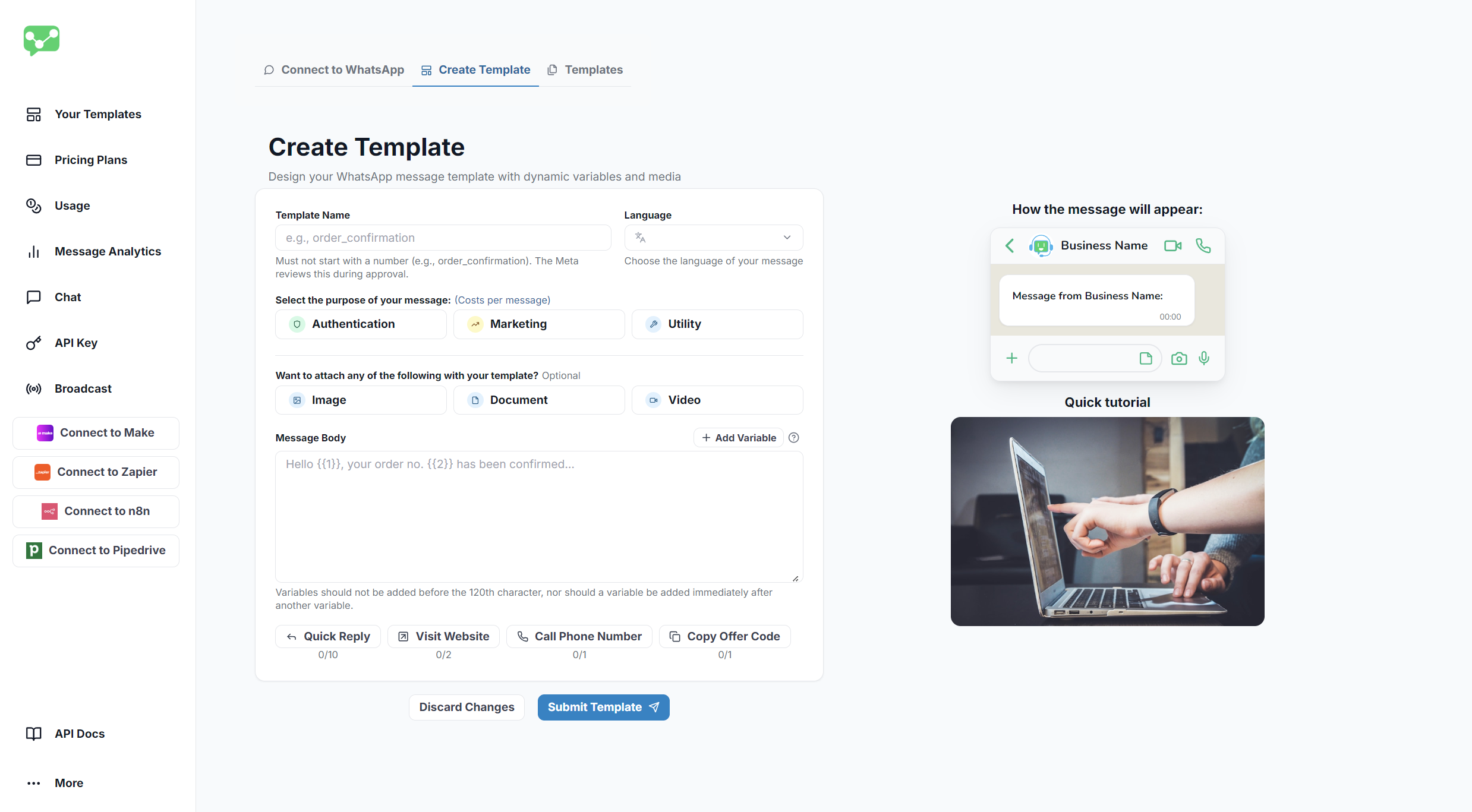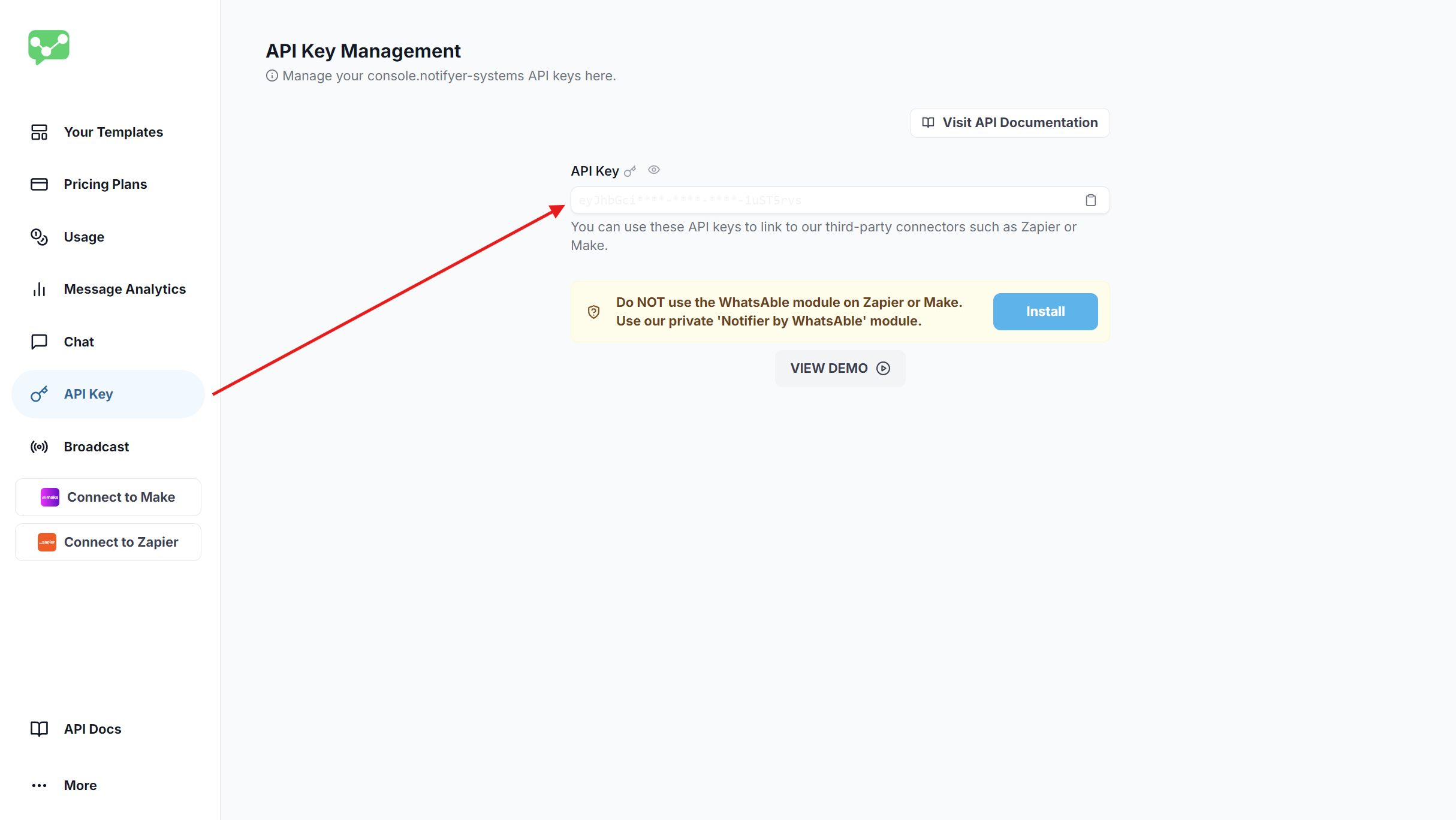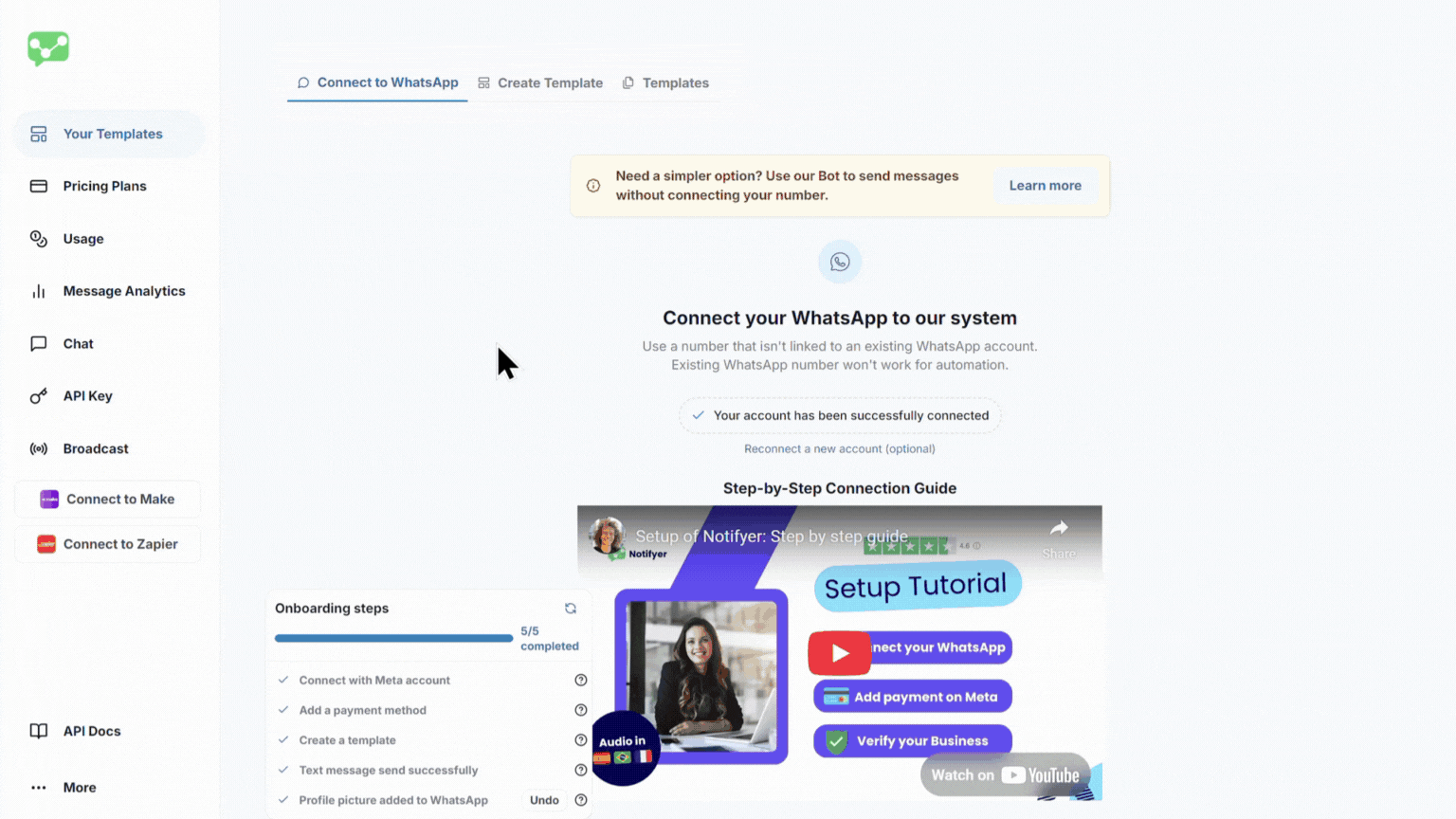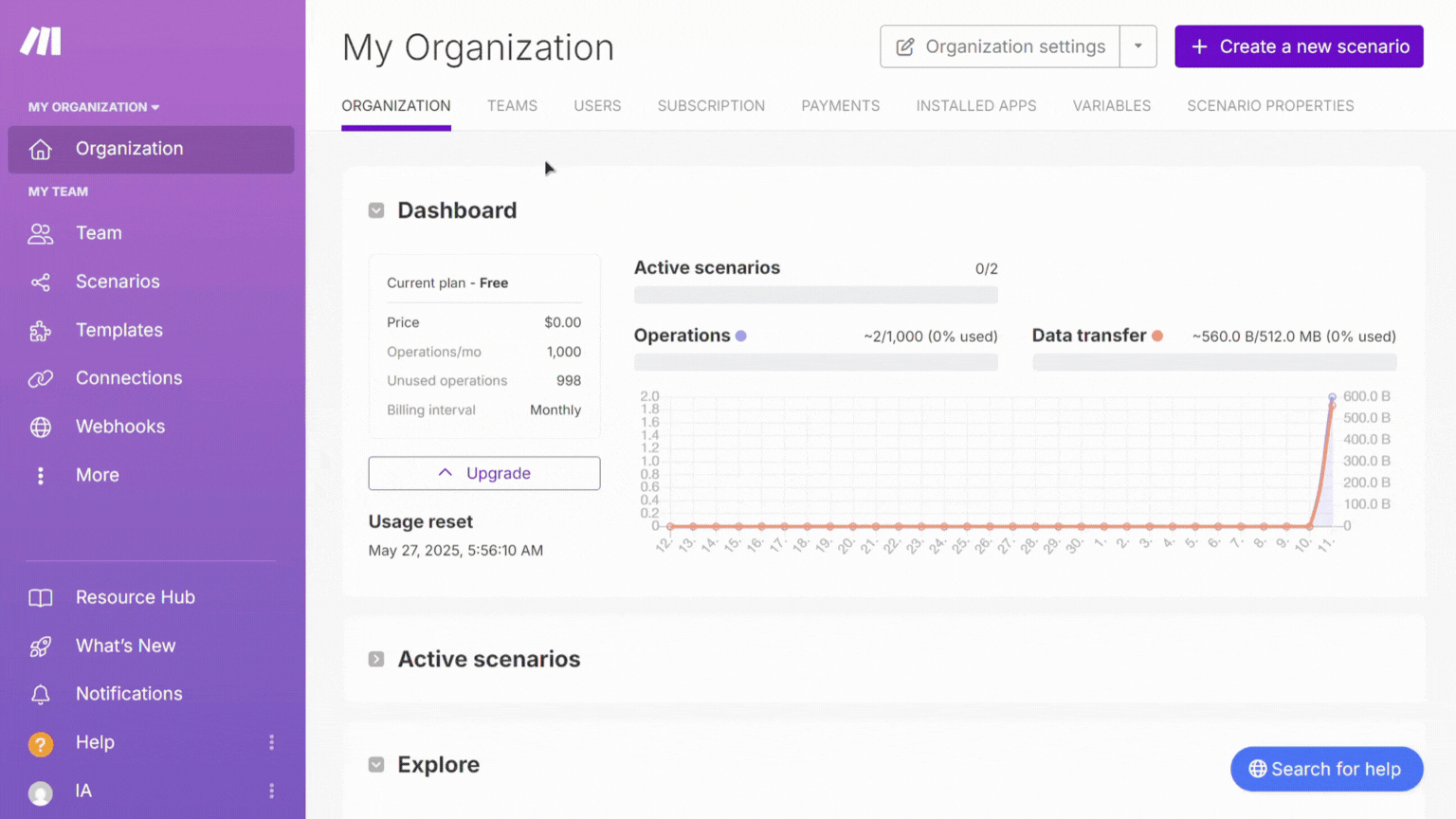Notifyer System Integration with Make

Automate your WhatsApp messaging workflows with Make and Notifyer System
Prerequisites
Before getting started, make sure you have:Notifyer System Account
Make Account
Setting up your Notifyer System account
Complete the Embedding Process
Set up message templates
Option A: Template messages
Option A: Template messages
WhatsApp templates are pre-approved message formats that allow for personalization while maintaining compliance with WhatsApp policies.
Navigate to Templates
Create Template
Fill out the form
{{1}}, {{2}} format for personalizationSubmit for review

Template Creation Interface
Option B: Non-template messages
Option B: Non-template messages
For simpler communications, you can send non-template messages that include:
Text
Images
Documents
Videos
Get your API key
- In your Notifyer dashboard, navigate to API Keys
- Copy your unique API key
- Store it securely—you’ll need it for the integration

API Key Location
Connect Notifyer System to Make
Now that you have Notifyer System set up, let’s connect it to Make to automate your scenarios.Install Notifyer System in Make
- Log in to your Make account
- Navigate to Notifyer System dashboard and select Connect to Make in the side menu
- Click Continue in the connection guide popup
- Click Install, select your organization at the bottom of the screen, then click Install again. (Note: You need Admin, Owner, or App Developer role in your organization to install apps.)

Installing Notifyer System in Make
Set up your Make Scenario
- Log in to your Make account
- Create a new scenario by clicking + Create a new scenario
- (Optional) Add a trigger module of your choice:
- Popular triggers include Google Forms, Jotform, ClickUp, or a Schedule trigger
- Connect and configure your trigger according to your use case

Setting up a module/trigger in Make
Add the Notifyer System module
- Click the + button to add a new module
- Search for Notifyer System in the apps or modules library
- Select the module with the official Notifyer System logo

Adding the Notifyer System module
Configure Notifyer System credentials
Credential Setup
Credential Setup
- Once you click on Notifyer System module, select ‘Send a WhatsApp Message with Your Template’ or ‘Send a WhatsApp Message without Template’ from the ACTIONS
- Click Create a connection in the Connection section of Notifyer System module and you will be prompted to enter your API Key
- Enter your Notifyer System API key that you copied earlier
- Rename your connection name if needed
- Click Save to store your credential

Configuring Notifyer System credentials
Configure your message
- Send a WhatsApp Message with Your Template
- Send a WhatsApp Message without Template

Template Message Configuration
Test and activate your scenario
- Click Save to save your message configuration
- Right click on the WhatsAble module and select Run this module only to verify the module is working correctly
- or click Run once in the bottom-left corner of the screen to test the entire scenario
- If the test is successful, you’ll see a confirmation message
- Click Save icon in the bottom-left corner to save your scenario (You can also set timer intarval for the scenario)
- Toggle the Active switch in the bottom-left corner with time to activate your scenario

Testing and activating your scenario
Example use cases
Order confirmations
Appointment reminders
Lead notifications
Customer support
Delivery updates
Payment reminders
Best practices
Test thoroughly
Test thoroughly
Use templates
Use templates
Add personalization
Add personalization
Follow WhatsApp policies
Follow WhatsApp policies
Monitor performance
Monitor performance
Troubleshooting
Messages not sending?
Messages not sending?
Verify API key
Check phone numbers
Check subscription
Template verification
Template errors?
Template errors?
Variable check
Format verification
Template name
Media not displaying?
Media not displaying?
URL access
File format
File size
- Images: up to 5MB
- Videos: up to 16MB
- Documents: up to 100MB